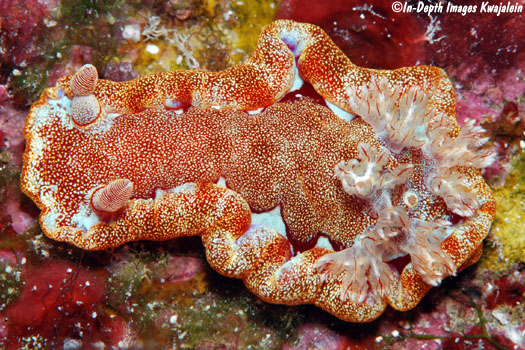
Nudibranchs in this genus are large and red, and are characterized by gill branches that protrude from six holes in the dorsum. Many different species have been named but a recent paper by TibiriÁŠ et al (2023) settled on five valid names. There may be more. In the Marshalls, Hexabranchus specimens tend to hide by day but may come out of their holes at night to wander in the open. They have been found in lagoon and seaward reef habitats from the surface--one was found still alive, just washed in on the eastern seaward beach of Enewetak--to depths of more than 50 meters on the seaward reef slope. Most commonly, we see relatively small individuals (about 100mm or less) hiding among Halimeda plants in lagoon algae patches. These were first reported in the Marshalls from Enewetak Atoll as Hexabranchus marginatus by Marcus (1965).

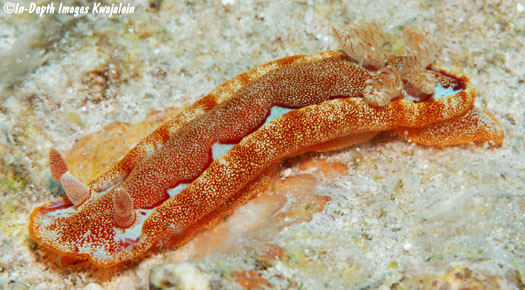
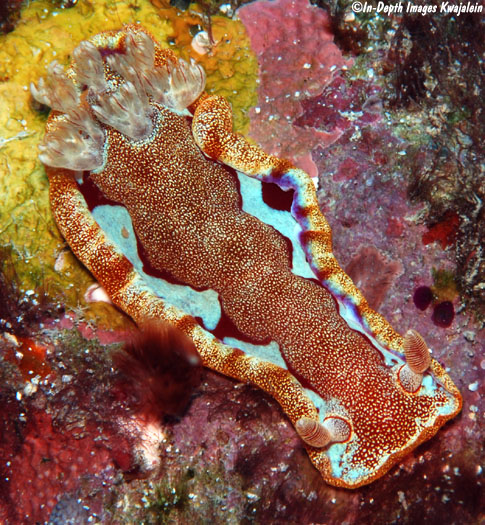
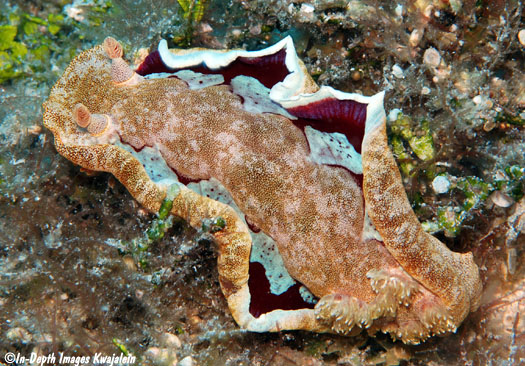
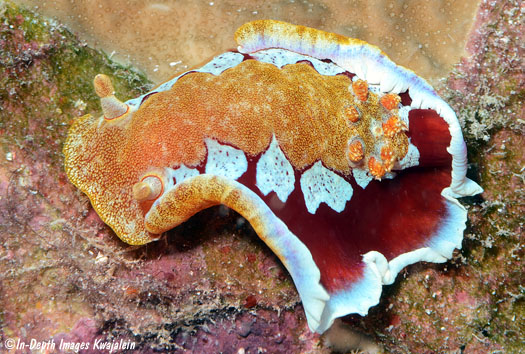
The animal immediately below was found under a rock on a Kwajalein Atoll seaward reef on 11 April 2010.
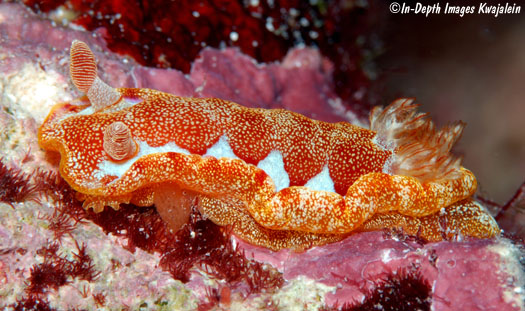
A similarly colored young specimen from a Kwajalein lagoon reef on 3 October 2011.
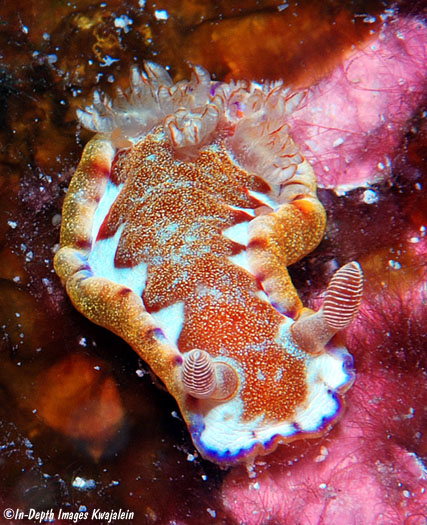
The photo below shows the wavy oral tentacles that flank the mouth on the underside of the anterior end.
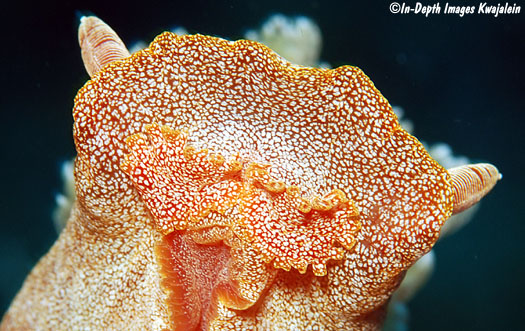
A head-on view of another reveals quite a face!
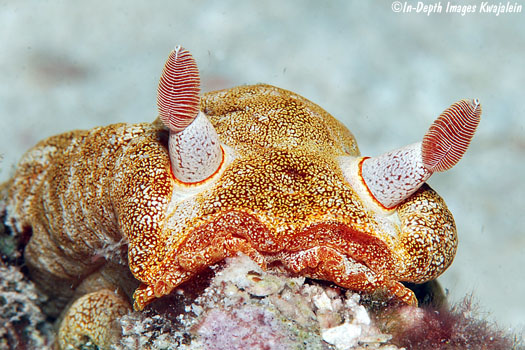
This is the same individual as in the face shot above. Nice large set of gills.
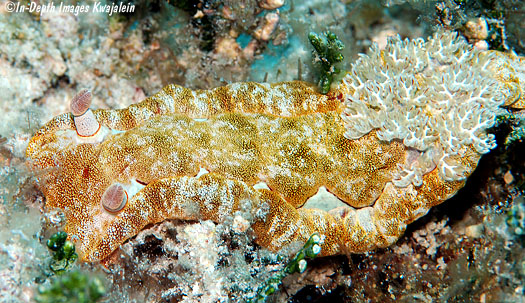
They swim by dorsal-ventral bending of the body and sending waves along the unfolded spanish dancer skirt.
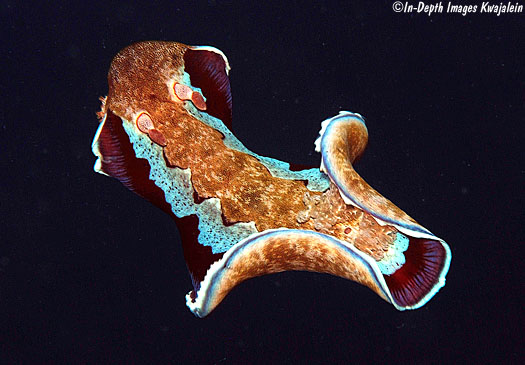
The individual below is the one that was washed in on the beach at Enewetak. When returned to the depths, it seemed to be fine and crawled away.
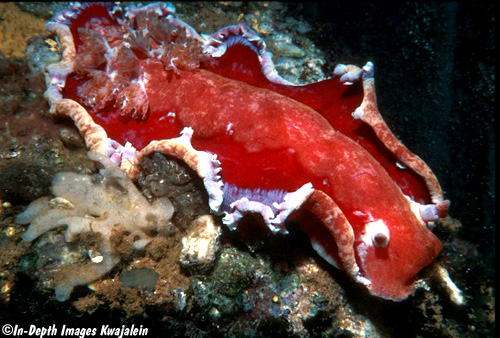
Hexabranchus is one of the few nudibranchs with a well-known common name. It swims when disturbed, and it can flare out its normally rolled up margins to look like the flowing skirts of a dancer. Not surprisingly, it is known as the Spanish Dancer nudibranch. It swims by flexing its body up and down and paddling itself through the water.
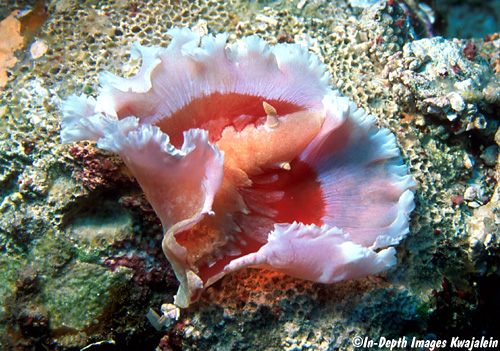
This is by far the largest nudibranch found so far in the Marshalls. The individual below was one of four individuals observed one night (29 September 1989) on the leeward seaward reef slope at a depth of about 20 meters. They were not accurately measured, but by comparing them in situ against camera gear it was obvious that each of the four exceeded 500mm in length. There were also several egg masses scattered about that night. In the 17 years since then, despite hundreds of dives in the same general area and under similar conditions, we have seen large Hexabranchus only a couple more times and never more than one at a time. You'd think something that large would not be able to hide that well.
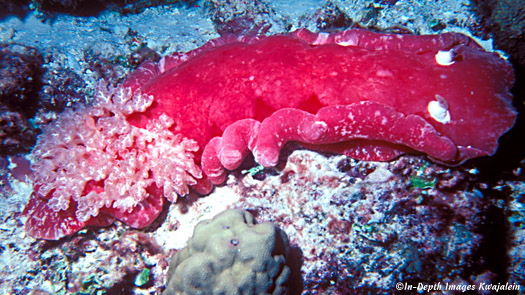
Young specimens are very colorful, almost looking like a kind of chromodorid nudibranch.
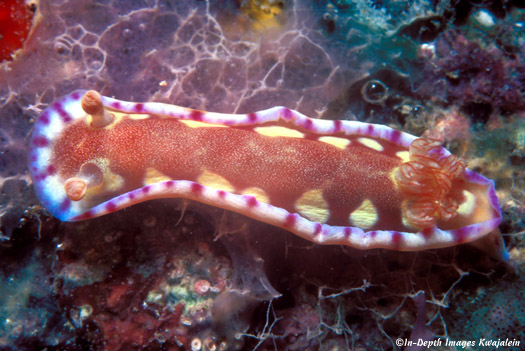
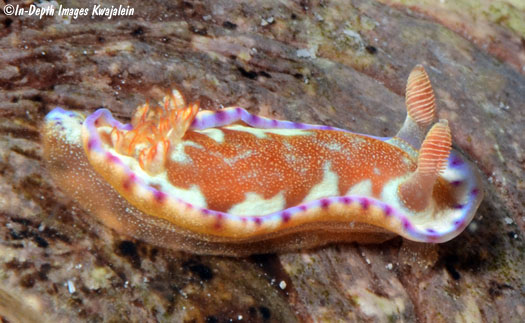
At 8mm long, the individual directly below was one of the smaller ones we have found, beaten by the following photo of a 6mm animal.
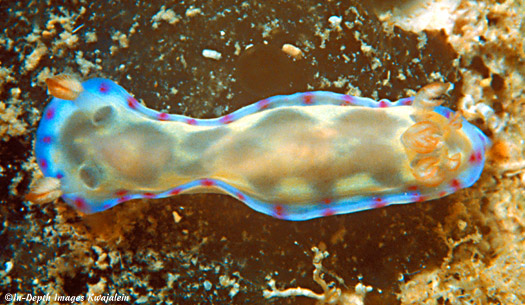
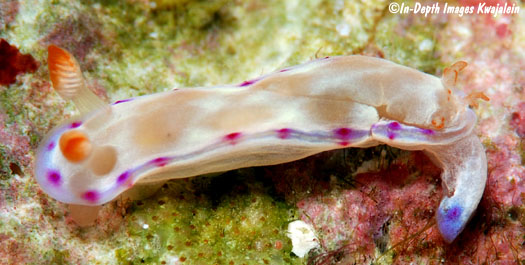
These two shots by Christina Sylvester show another very small individual found in a Kwajalein reef quarry.
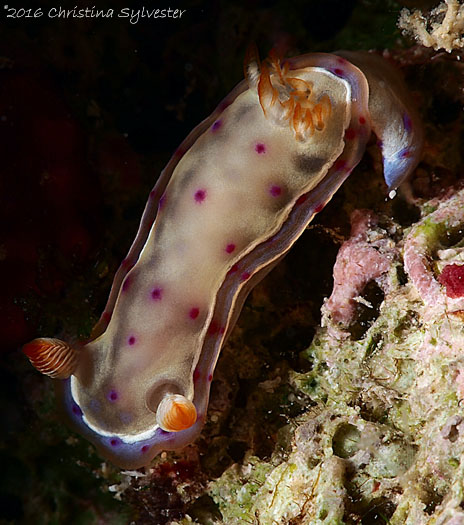
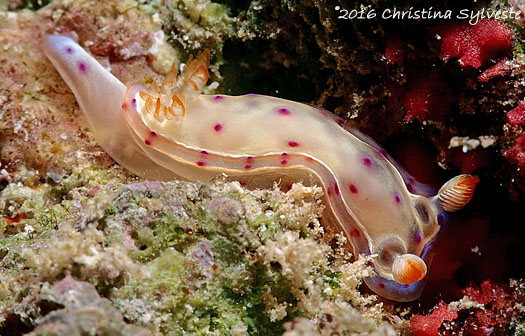
More from the Kwajalein reef quarries. It seems these quarries make good nurseries for this species.
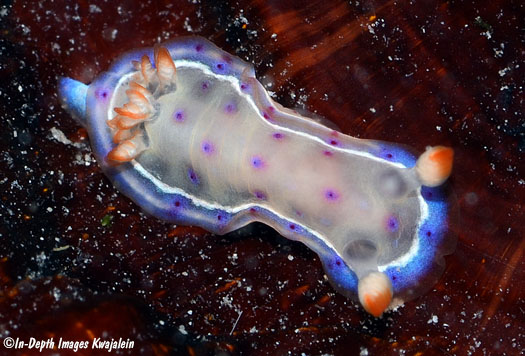
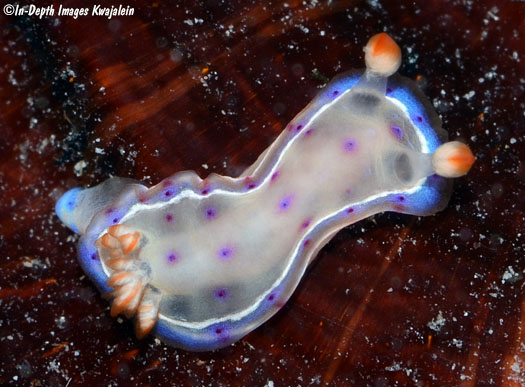
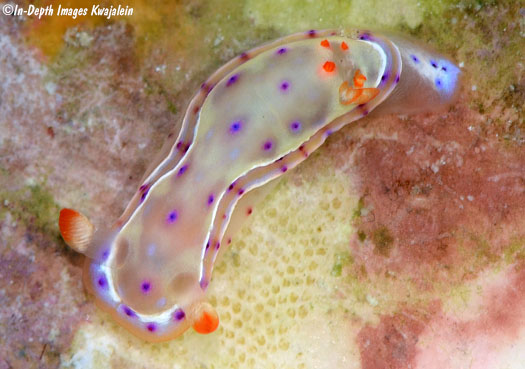
Created 15 December 2006
Updated 30 June 2023